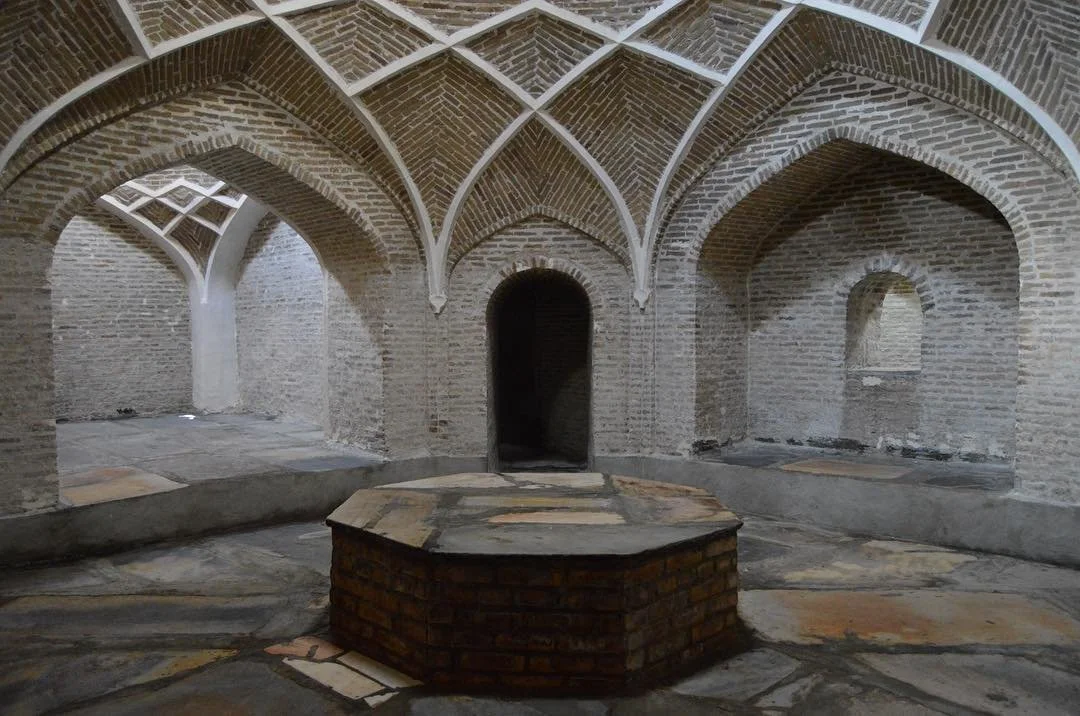Wander in Bukhara: Where History Steams at Hammomi Kunjak
Hammomi Kunjak, the oldest surviving bathhouse in Central Asia, offers scrubs and massages that wash away the dust and weariness of your Silk Road journey.
Sense of Wander: ★★★★★
Hammomi Kunjak is tucked away amid a labyrinth of alleyways near the Poi-Kalyan Mosque.
Bukhara, UZBEKISTAN — It’s late in the evening but the streets of Bukhara seem to have only just awakened. With the sun’s blazing heat finally receding, crowds begin to spill into the heart of the old city.
Like many visitors, I wander through the trading domes, passing hand-knotted carpets, rustic suzani embroidery, and the heart-stirring sound of string instruments echoing through the air. We’re heading toward the famed Poi-Kalyan Mosque and its towering minaret while knowing that it isn’t our final destination.
Turning toward the mosque’s southern side, we slip into narrow lanes, our figures almost swallowed by the dark. Guided by moonlight, we tiptoe through the winding alleyways until we arrive. Above the doorway, the word Hammomi — Uzbek for “bathhouse” — stands out in bold white against an ocean-blue ground.
Since ancient times, bathhouses have been built near bazaars, where merchants and travellers could seek the comfort of hot steam after long days of trade. Built in the 16th century, Hammomi Kunjak is the oldest surviving bathhouse of its kind in Central Asia.
Pushing through the door, an entryway opens into a spacious room. The staff greets us warmly and leads us to our lockers. “Take everything off,” one says, handing us towels. “Everything?” I ask, half-joking, half-hesitant. She nods, firm yet kind.
Public bathing has never been my comfort zone, but tonight feels different. This is not just any regular bath but an intimate encounter with centuries of tradition. And what better place to surrender to it than in a centuries-old hammam along the ancient Silk Road?
According to the plaque, Hammomi Kunjak’s architecture has stood since the 16th century.
Hammomi Kunjak catches the first light of dawn.
Having left our belongings behind and wrapped ourselves in towels, we descend a short flight of stairs into the heart of the bathhouse, slightly below ground level.
The air hits me instantly: thick, humid, almost suffocating. In the centre of the room, a woman lies face-down on a marble platform, her skin pressed and slapped by the masseuse’s rhythmic strokes, each sound echoing through the otherwise silent space.
We step into the innermost chamber, which I soon realise is a sauna. The heat is overwhelming. Somewhere between endurance and surrender, sweat begins to flow through my open pores. My cheeks, still sunburned from days of travel, sting sharply. My legs, sore from climbing Khiva’s minaret days earlier, feel as though they are on fire. Time seems to have slowed, and I can’t help but asking myself again and again: how long is ten minutes?
In the old days, women gathered in baths not only for health but for solace — a space to rest, talk, and share. Though I’m here with my companions, we are all so absorbed in this centuries-old ritual that only the sound of splashing water and the faint hiss of foam fill the air.
A woman returns with a bucket of water, washing me from head to toe before scrubbing my skin with firm, practiced strokes. As she pours ladles of water over my head, my eyes linger on the bucket itself — its shape reminds me of the Bobrinski Bucket, a 12th-century vessel from Herat that some scholars believe may have once served in a bathhouse like this.
The brick walls of Hammomi Kunjak’s main chamber carry the weight of history. Image from internet.
Then comes the ginger paste. Within minutes, my body is covered in this spicy, aromatic mixture. At first, it feels mild. But gradually, the heat spreads, like wildfire consuming a forest. Sitting next to me is a woman from Bosnia who gently blows the paste on her arms to ease the burn. We exchange small, knowing smiles through the haze.
When the paste is rinsed away, I’m led to lie down on the platform. Even through the towel, its surface radiates intense heat, making me feel as if I were a piece of meat waiting to be grilled. My already inflamed muscles protest against each pinch of the massage. I signal the masseuse to be gentler; she nods, smiling.
Finally, cool water is poured over me — a gentle blessing that awakens my senses. My body, now cleansed, is wrapped by the masseuse with a few careful folds and knots, transforming the towel into a sarong-like wrap. She helps me up the stairs, steadying my arm as if ushering me from the ancient world back into the present.
Upstairs, I join my friends for tea. The warmth of the drink meets the cool night air brushing against my bare shoulders. Later, I learn that the ginger paste is traditionally applied after the massage, not before. But before we can chat for longer, the staff — after having finished their own baths — remind us that it’s time to close. The entire ritual lasts less than an hour and it feels very much like a dream.
On my way back to the hotel, I reflect on how baths have always held a sacred place here: a ritual for both body and spirit. The Prophet Muhammad (peace be upon him) once said, “Cleanliness is half of faith.” This hadith speaks to both physical and spiritual purification. Perhaps that’s why, as the steam rose around me in that ancient bathhouse of Bukhara, I could feel my spirit, too, washed clean.
With that, I leave the bathhouse behind, my body cleansed and my spirit light, and continue my journey along the Silk Road.
Wanderer’s Tips — Beyond Hammomi Kunjak, another historic bathhouse, Hammam Bozori Kord, near Toqi Telpakfurushon invites curious wanderers to plunge into centuries of cleansing ritual.




